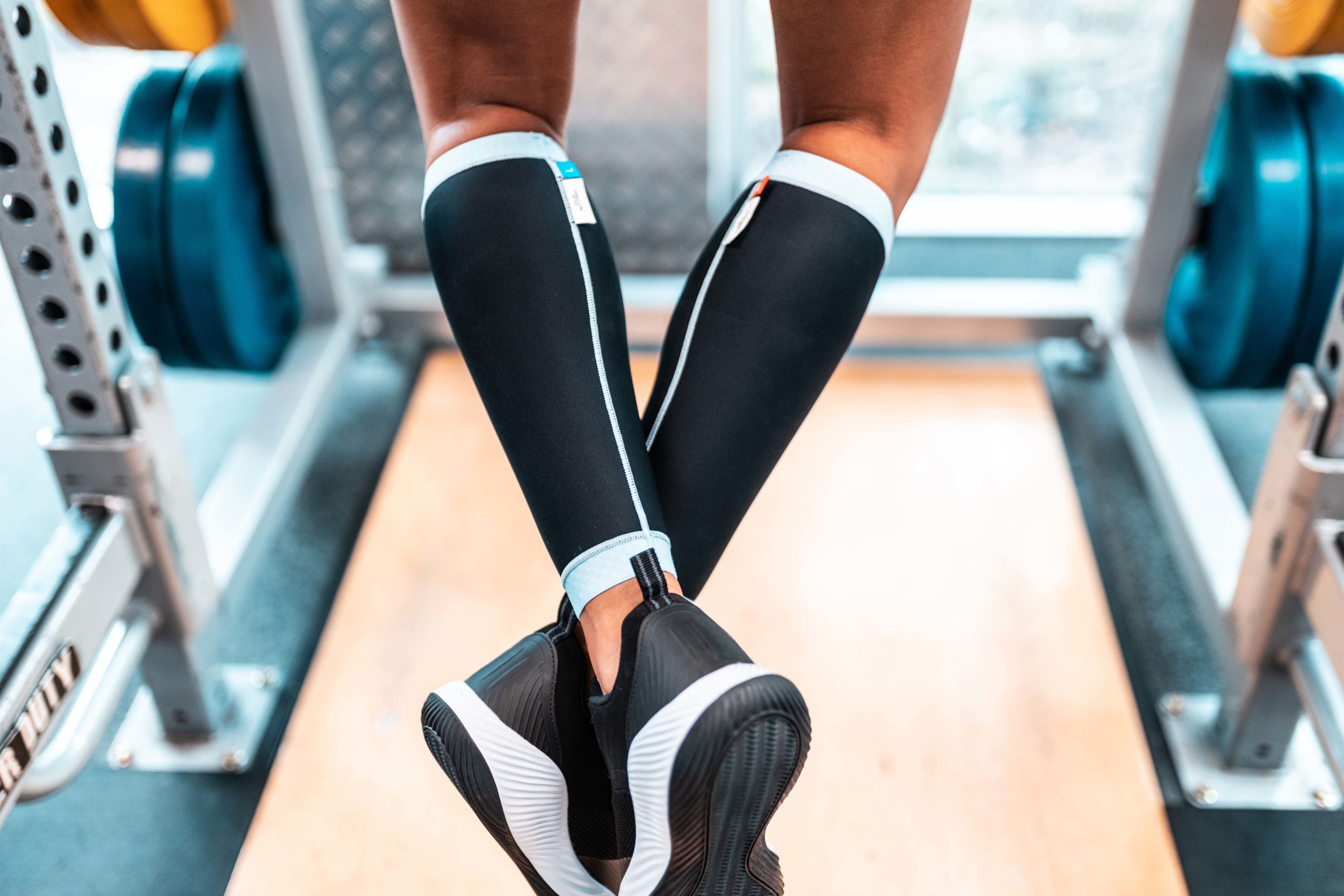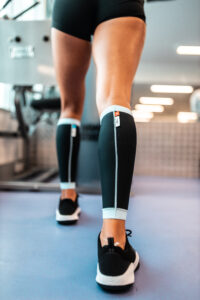The use of compression garments originated in the medical industry as a means to treat conditions such as burns, deep vein thrombosis, lymphedema, and venous insufficiency. Compression garments have been shown to improve circulation, increase venous return and reduce oedema. More recently the physiological impact of compression garments have been used by athletes with the intention of enhancing recovery by reducing inflammation and muscle soreness.
What is the difference between sports and medical grade compression?
For compression garments to be effective, the correct pressure must be applied to the skin. Recent research showed that medical grade compression socks exhibited a small but statistically significant difference in pressure profile compared to sports compression socks (Brophy Williams et al 2020). The medical grade socks applied a higher interface pressure than sports compression socks. This questions the effectiveness of commercially available sports compression garments in achieving the required pressure and the associated physiological benefits that elite athletes are seeking.
The importance of correct fit
Whilst a number of studies have shown a beneficial effect of sports compression on performance and recovery, there are studies which have shown minimal benefits from commercially available sports compression garments. This is likely due to incorrect pressure or fit. The effectiveness of compression garments depends on the force applied to the skin. If the compression is too low then there will be insufficient pressure to affect blood flow, whereas compression levels that are too high may be restrictive and consequently hinder athlete performance and recovery.
Sports compression garments are sized on measures of height and body mass, not the actual shape and size of the limb. Consequently, wide variation exists in the degree of pressure exerted by commercially available sports compression garments, and in some cases, this may be insufficient to enhance performance or recovery.
A recent study comparing custom fit compression garments against standard sized garments, showed that the custom fit garments improved strength recovery and markers of muscle damage in Rugby players compared to standard sized garments (Brown et al 2020). Based on these findings, it was recommended that athletes use custom fitted compression garments to enhance recovery.
Medical grade custom fit compression for athletes
Elite athletes deserve the best compression in order to optimise recovery and achieve peak performance. CAPE compression garments are medical grade compression garments, which are custom fitted to the individual athlete based on a 3D scan. CAPE provide specific garments for performance, recovery, travel, and rehabilitation ensuring that elite athletes receive the most appropriate compression regime for their needs.
CAPE garments have been designed based on years of research in the aerospace and medical industry, to provide elite athletes with the best possible compression garments with a perfect fit and optimum compression regime.
As proven by research, the benefits of medical grade custom fit compression garments clearly outweigh standard fit sports compression garments, making these garments the preferred option for elite athletes wanting to achieve optimum performance.
REFERENCES:
- Brophy-Williams, James W. Fell, Shona L. Halson, Cecilia M. Kitic & Matthew W. Driller (2020): Pressure gradient differences between medical grade and sports compression socks, The Journal of The Textile Institute, DOI: 10.1080/00405000.2020.1730664
- Brown, F, Jeffries, O, Gissane, C, Howatson, G, van Someren, K, Pedlar, C, Myers, T, and Hill, JA. (2020): Custom-fitted compression garments enhance recovery from muscle damage in rugby players. J Strength Cond Res.



